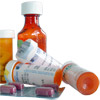Introduction

Antiretroviral therapy (ART) is the cornerstone of treating the HIV infection. It has been firmly established that if HIV-positive individuals comply with their ART regimen, they are less likely to die from HIV/AIDS or develop an AIDS-defining condition. For this reason, individuals with HIV should be fully informed on all aspects of the proposed ART regimen before commencing. It is important to note that there is no known cure for HIV – antiretroviral therapy suppresses the infection to prevent the development of the immune-related effects of HIV, but the virus can never be fully eradicated from the body.
There are four distinct clinical stages after becoming infected with HIV, ranging from stage 1 (no symptoms) to stage 4 (severe AIDS-defining condition). WHO guidelines for the use of antiretrovirals in HIV/AIDS recommend that individuals with a CD4 count ≤ 350 cells/mm3 receive antiretroviral therapy, regardless of clinical stage. It is also recommended to treat all patients with clinical stage 3 or 4, regardless of their CD4+ cell level.
ART regimens need to be personalised for each individual. This means that treatment regimens may differ slightly between individuals, depending on the which drugs are effective against the particular strain of HIV they are infected with, as well as the effectiveness, toxicity, tolerability, dosing frequency, interactions with other drugs, financial cost, other illnesses that the individual may have and the individual’s own preference. The World Health Organisation (WHO) recommends certain combinations of different antiretroviral medications to suppress the HIV infection. This is to both get the best result for the patient, but to also prevent (or prolong) the development of treatment-resistant strains of HIV. The use of single drugs, or not fully complying with treatment regimens (such as taking a combination of drugs intermittently) can lead to the emergence of a treatment-resistant HIV infection. In the case of the first-line therapies recommended by WHO, if individuals fully adhere to treatment and the HIV strain is susceptible, viral replication can be suppressed in up to 80% of cases.
Combination therapies recommended by WHO involves the use of different categories of antiretroviral drugs:
- Nucleoside reverse transcriptase inhibitors (NRTIs);
- Non-nucleoside reverse transcriptase inhibitors (NNRTIs);
- Protease inhibitors; and
- Fusion inhibitors and CCR5 antagonists.
Book your health appointments online
Find and instantly book your next health appointment with Healthengine
How do they work?

The HIV virus exists as a small capsule containing RNA and a set of enzymes to help it reproduce. By mimicking the activity of many human cellular enzymes, the HIV virus can enter a human cell, move into the cell nucleus, then become incorporated into human DNA. As our own cellular enzymes create proteins from the DNA found in each of our cells, by inserting RNA into human DNA, the virus can generate more and more copies of itself to infect more cells, exploiting the host cell’s own mechanisms. As more copies of the HIV virus invade more CD4+ immune cells, the immune system starts to collapse – HIV-infected CD4+ cells are more prone to both destruction and exhaustion by over-activity. The resulting immune suppression marks the transition from HIV infection to full-blown AIDS and the consequent AIDS-defining conditions.
Thanks to many years of research, scientists now understand the inner workings of the HIV virus. Antiretroviral drugs try to attack different steps in the viral replication process to suppress the infection, with different categories of antiretrovirals attacking different steps.
Nucleoside and nucleotide reverse transcriptase inhibitors (NRTIs) try to inhibit a key viral enzyme called reverse transcriptase, responsible for incorporating the virus into the human DNA strand. This category includes drugs such as zidovudine, didanosine, zalcitabine, stavudine, lamivudine, abacavir, emtricitabine and tenofovir. Non-nucleoside reverse transcriptase inhibitors (NNRTIs) also try to inhibit reverse transcriptase by changing the shape of the viral enzyme to decrease its activity. Some examples include nevirapine, delavirdine, efavirenz and etravirine. Protease inhibitors try to stop the activity of a different viral enzyme called viral protease, responsible for creating new HIV RNA particles. Examples include saquinavir mesylate, fortovase, ritonavir, indinavir, nelfinavir, amprenavir, fosamprenavir, atazanavir, tipranavir and darunavir. The last category of ARVs tries to prevent the virus from entering white blood cells, using drugs like fusion inhibitors (enfuvirtide) and CCR5 antagonists (aplaviroc, vicriviroc and maraviroc).
 |
For more information on the other classes of anti-retroviral therapies, see Antiretroviral Therapy (Anti-HIV Drugs). |
How well do they work?
The three main NRTIs recommended in the WHO guidelines for treating HIV are zidovudine, tenofovir and lamivudine. There have been a number of clinical trials in human patients (adults and children) on the use of these drugs, both alone and in combination. They have all demonstrated a meaningful effect on the virus itself, as well as improving the body’s ability to fight the infection through increased levels of CD4+ immune cells. Zidovudine has been shown to suppress the number of HIV viruses replicating, raise the level of CD4+ immune cells and improve survival of individuals with HIV infections. Tenofovir has been demonstrated to suppress not only HIV replication, but also hepatitis B viral replication, making it an excellent choice for patients with both HIV and hepatitis B infections. Lamivudine has also been shown to suppress the HIV virus; however, it has the most meaningful effect on survival rates of people with HIV when used in combination with other drugs (such as zidovudine). In fact, using these drugs in combination greatly limits the ability of HIV to become resistant to treatment.
The preferred first-line ART regimen for different individuals are listed below, as per WHO guidelines for the treatment of HIV infection. Regimens generally use a combination of NRTIs and NNRTIs. However, the choice of medication may depend on individual factors and choosing the appropriate medication should consider these issues.
Adults and adolescents with HIV should receive three drugs:
- Zidovudine or tenofovir; plus
- Lamivudine or emtricitabine; plus
- Efavirenz or nevirapine.
The WHO recommends that ARTs be used in HIV-infected pregnant women, with a preferred regimen of zidovudine plus lamivudine with either nevirapine or efavirenz. Efavirenz should not be commenced during the first trimester of pregnancy. Treatment regimens should include zidovudine/lamivudine for treating HIV-positive infants and children.
Side effects

Zidovudine
Common side effects (occurring in over 5% of patients) from zidovudine include weakness (asthenia), headache, malaise, reduced appetite, constipation, nausea or vomiting. Less than 0.8% develop a severe side effect called hyperbilirubinaemia (an excess of the protein bilirubin in the blood). The frequency and severity of these side effects is greater in patients with more advanced infections. Zidovudine has also been associated with bone marrow suppression, muscle pain (myopathy), immune reconstitution syndrome (a condition in which the immune system produces an abnormally vigorous response to a an infection after a period of immunosuppression) and changes in fat redistribution.
Tenofovir
The most common side effects due to tenofovir (affecting ≥ 10% of patients) include rash, diarrhoea, headache, pain, depression, weakness (asthenia), and nausea. Tenofovir has also been linked to new or worsening kidney impairment and decreases in bone mineral density (potentially leading to osteoporosis).
Lamivudine
The most common side effects due to lamivudine use are headache, nausea, malaise, fatigue, nasal signs and symptoms, diarrhoea and cough. These side effects occurred in 5–35% of people in trials of lamivudine. It can rarely (0.3% of adult patients) cause pancreatitis; however, in trials of children this has been as high as 12–18%. 15% of children taking lamivudine reported altered sensation (paraesthesia) or peripheral neuropathies.
All three NRTIs have been associated with rare cases of lactic acidosis and liver complications, which can be fatal. The risk of these effects is slightly higher in women, the obese and individuals taking these drugs for long periods of time.
Conclusion
Several drug trials are still ongoing, exploring the risks and benefits of different combinations of antiretroviral drugs in the treatment of HIV. Choosing the appropriate HIV treatment should involve detailed discussion with a doctor, considering factors such as medical history, other illnesses, prior treatments, stage of disease and individual preferences.
References
- Centers for Disease Control and Prevention (CDC). The Global HIV/AIDS pandemic, 2006. MMWR Morb Mortal Wkly Rep. 2006;55(31):841-4. [Abstract | Full text]
- Lane HC. Pathogenesis of HIV infection: total CD4+ T-cell pool, immune activation, and inflammation. Top HIV Med. 2010; 18(1): 2-6. [Abstract]
- Schneider E, Whitmore S, Glynn MK, et al. Revised surveillance case definitions for HIV infection among adults, adolescents, and children aged < 18 months and for HIV infection and AIDS among children aged 18 months to < 13 Years. MMWR Recomm Rep. 2008;57(RR-10):1-12. [Abstract | Full text]
- Thompson MA, Aberg JA, Cahn P, et al. Antiretroviral treatment of adult HIV infection: 2010 recommendations of the International AIDS Society-USA panel. JAMA. 2010;304(3):321-33. [Abstract | Full text]
- Antiretroviral therapy for HIV infection in adults and adolescents [online]. Geneva: World Health Organization; 2010 [cited 12 August 2012]. Available from: [URL link]
- Antiretroviral drugs [online]. Melbourne, VIC: Therapeutic Guidelines; 2012 [cited 15 August 2012]. Available from: [URL link]
- Braunwald E, Fauci AS, Kasper DL, et al. Harrison’s Principles of Internal Medicine (15th edition). New York: McGraw-Hill Publishing; 2001. [Book]
- Antiretrovirals [online]. Adelaide, SA: Australian Medicines Handbook; 2012 [cited 14 August 2012]. Available from: [URL link]
- Zidovudine [online]. St Leonards, NSW: MIMS Online; 1 July 2012 [cited 16 August 2012]. Available from: [URL link]
- Tenofovir [online]. St Leonards, NSW: MIMS Online; 1 May 2012 [cited 16 August 2012]. Available from: [URL link]
- Lamivudine [online]. St Leonards, NSW: MIMS Online; 1 May 2012 [cited 16 September 2012]. Available from: [URL link]
- Fischl MA, Richman DD, Grieco MH, et al. The efficacy of azidothymidine (AZT) in the treatment of patients with AIDS and AIDS-related complex. A double-blind, placebo-controlled trial. N Engl J Med. 1987; 317(4): 185-91. [Abstract]
- Chaisson RE, Allain JP, Leuther M, Volberding PA. Significant changes in HIV antigen level in the serum of patients treated with azidothymidine. N Engl J Med. 1986; 315(25): 1610-1. [Abstract]
- Recommendations for use of antiretroviral drugs in pregnant HIV-1-infected women for maternal health and interventions to reduce perinatal HIV transmission in the United States [online]. Newark, NJ: AIDS Education & Training Centers National Resource Center; 31 July 2012 [cited 3 September 2012]. Available from: [URL link]
- Guidelines for the use of antiretroviral agents in pediatric HIV infection [online]. Rockville, MD: AIDSinfo; 5 November 2012 [cited 3 September 2012]. Available from: [URL link]
- Guidelines for the use of antiretroviral agents in HIV-1-infected adults and adolescents [online]. Rockville, MD: AIDSinfo; 2012 [cited 4September 2012]. Available from: [URL link]
- Squires K, Pozniak AL, Pierone G Jr, et al. Tenofovir disoproxil fumarate in nucleoside-resistant HIV-1 infection: a randomized trial. Ann Intern Med. 2003; 139(5 Pt 1): 313-20. [Abstract]
- Spaulding A, Rutherford GW, Siegfried N. Tenofovir or zidovudine in three-drug combination therapy with one nucleoside reverse transcriptase inhibitor and one non-nucleoside reverse transcriptase inhibitor for initial treatment of HIV infection in antiretroviral-naïve individuals. Cochrane Database Syst Rev. 2010; (10): CD008740. [Abstract | Full text]
- Pluda JM, Cooley TP, Montaner JS, et al. A phase I/II study of 2′-deoxy-3′-thiacytidine (lamivudine) in patients with advanced human immunodeficiency virus infection. J Infect Dis. 1995; 171(6): 1438-47. [Abstract]
- van Leeuwen R, Katlama C, Kitchen V, et al. Evaluation of safety and efficacy of 3TC (lamivudine) in patients with asymptomatic or mildly symptomatic human immunodeficiency virus infection: a phase I/II study. J Infect Dis. 1995; 171(5): 1166-71. [Abstract]
- The CAESAR Co-ordinating Committee. Randomised trial of addition of lamivudine or lamivudine plus loviride to zidovudine-containing regimens for patients with HIV-1 infection: the CAESAR trial. Lancet. 1997 May 17; 349(9063): 1413-21. [Abstract]
- Retrovir (zidovudine) [online]. Bethesda, MD: US National Library of Medicine – Daily Med; July 2011 [cited 14 September 2012]. Available from: [URL link]
- Viread (tenofovir disoproxil fumarate) [online]. Bethesda, MD: US National Library of Medicine – Daily Med; Oct 2011 [cited 14 September 2012]. Available from: [URL link]
- Epivir (lamuvidine) [online]. Bethesda, MD: US National Library of Medicine – Daily Med; Dec 2011 [cited 15 September 2012]. Available from: [URL link]
- Antiretroviral therapy of HIV infection in infants and children: towards universal access: recommendations for a public health approach – 2010 revision [online]. Geneva: World Health Organization; 2010 [cited 28 September 2012]. Available from: URL link
All content and media on the HealthEngine Blog is created and published online for informational purposes only. It is not intended to be a substitute for professional medical advice and should not be relied on as health or personal advice. Always seek the guidance of your doctor or other qualified health professional with any questions you may have regarding your health or a medical condition. Never disregard the advice of a medical professional, or delay in seeking it because of something you have read on this Website. If you think you may have a medical emergency, call your doctor, go to the nearest hospital emergency department, or call the emergency services immediately.







